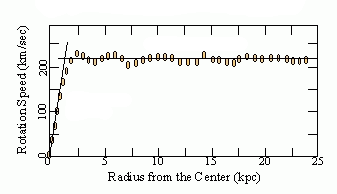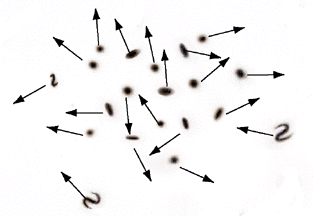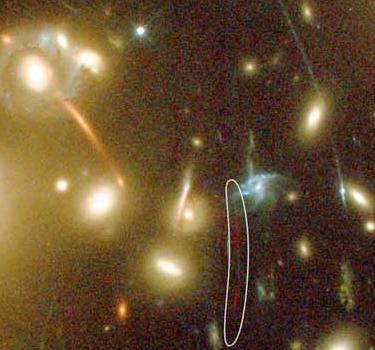We already discussed how the rotation curve of a galaxy tells us about its contained
mass (see discussion on Page
72).
|
What if the velocity is too great for the observable mass? The matter is there,
we simply can't see it! Its called Dark Matter.
To see how the mass distribution affects the rotation curve
of a galaxy, try
this experiment.
|

|

|
Other Evidence for Dark Matter
Over 70 years ago astronomers started measuring the random velocities of galaxies in
cluster, and noticed the velocities of the galaxies were about a factor of ten to one
hundred larger than they expected.
If a galaxy's velocity is too large,
the galaxy will be able to break free of the gravitational pull of the cluster. By
knowing that all of the galaxies have velocities of less than the escape velocity,
you can estimate the total mass. Such calculations indicate the mass was MUCH
greater than could be seen from luminous matter alone.
|
To see how the mass distribution affects the velocity of a cluster of
galaxies, try
this experiment.
Final Evidence for Dark Matter
Some very strange and unexplained structures have been seen in Deep Hubble images. We
now know that these structures are warped images, due to gravitational lensing.
A background objects light is bent around a massive object (such as a massive foreground
cluster). Such effects confirm that the clusters have much greater mass than can be attributed
to luminous matter.
Between 95 and 95% of the matter in the universe appears to be Dark Matter!
To see how the mass distribution affects the image of a background object,
try
this experiment.
|

|
|